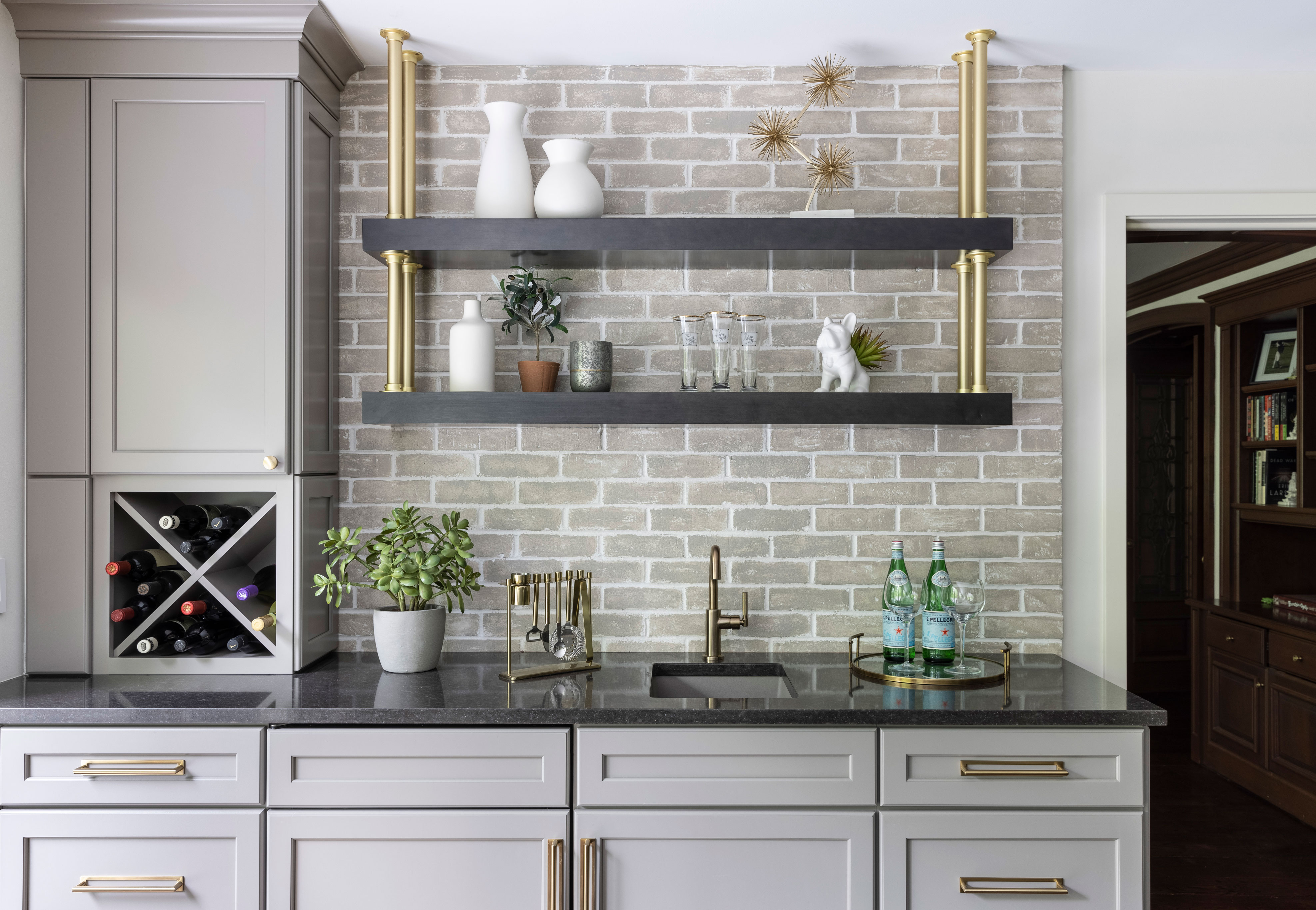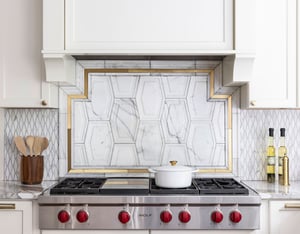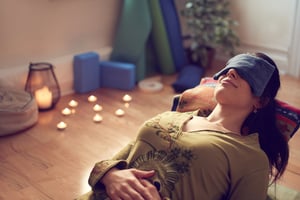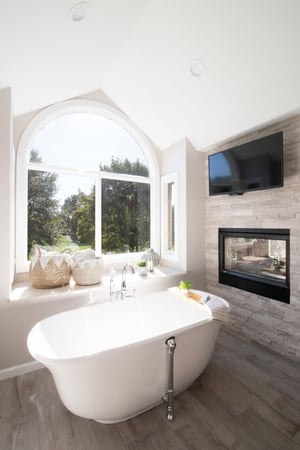
Christina is a nationally recognized Designer at KSI Kitchen & Bath's Birmingham Design Center. Christina received the Gold Award for Best Master Bath under $50K in the 2023 Kitchen & Bath Design Awards from Kitchen & Bath Design News.

 We have all heard the phrase “Less is More” at some point in our lives. But in our consumer society, we are constantly being told “More is More!” Advertising is thrown at us on all sides, encouraging us to collect, consume, and have more things. Buy all the things! Because having more things will make you more happy and more successful, right?
We have all heard the phrase “Less is More” at some point in our lives. But in our consumer society, we are constantly being told “More is More!” Advertising is thrown at us on all sides, encouraging us to collect, consume, and have more things. Buy all the things! Because having more things will make you more happy and more successful, right?
At some point we may find ourselves reevaluating the impact of accumulating more physical items in our lives. When spending time at home, that home needs to be a place where we can feel rested, a place we can relax, and dare we say, a place that can be a haven from the stress of the outside world. And nothing is more stressful than a cluttered, messy house.
Enter: minimalism. Interior design's answer to a less cluttered life.
When we are thinking about minimalism in relation to design, undoubtably the average person immediately imagines clean, clear surfaces, few items in the room, and limited use of color. One might even take that further and imagine completely white rooms, structured modern Scandinavian furniture, and sterile "do-not-touch-anything" museum vibes. But these visuals don't necessarily define minimalism.
 So, what exactly is minimalism? And where did it come from? Minimalism is not so much a visual style, but a principle – a way to approach living your life. Historically, this approach originated in Japan and was closely tied to the ‘Zen’ or Buddhist movements which emphasize simple lines and forms paired with practical solutions. As a principle, it can be applied to any style of design. Traditional, contemporary, industrial, midcentury – all can have the basic principles of minimalism applied to achieve a relaxing and uncluttered space. Thanks to HGTV and celebrity organizers like Marie Kondo and The Home Edit, being able to achieve a minimal, livable aesthetic is easier than ever. Let’s dive into the steps to achieving a less cluttered life through minimalism. What exactly are they?
So, what exactly is minimalism? And where did it come from? Minimalism is not so much a visual style, but a principle – a way to approach living your life. Historically, this approach originated in Japan and was closely tied to the ‘Zen’ or Buddhist movements which emphasize simple lines and forms paired with practical solutions. As a principle, it can be applied to any style of design. Traditional, contemporary, industrial, midcentury – all can have the basic principles of minimalism applied to achieve a relaxing and uncluttered space. Thanks to HGTV and celebrity organizers like Marie Kondo and The Home Edit, being able to achieve a minimal, livable aesthetic is easier than ever. Let’s dive into the steps to achieving a less cluttered life through minimalism. What exactly are they?
What is it that you value? What is most important to you? Why are you pursuing this path of minimalism? Do you desire a calmer space? Are you wanting to be more eco-friendly by lowering your carbon footprint? Are you trying to improve your mental health? Physical health? Once you find your purpose or main goals, you can use them to guide your journey towards minimalism.

Being a minimalist is about being conscious of what you are consuming or purchasing new, while also being aware of our existing possessions and how they affect us. Deciding not to buy another spatula impulsively when you already have four is an example of resisting the urge to buy something new that you do not need. In those moments, you can stop and analyze the reason why you want to buy the specific item in the first place, and then compare it to your main goals and priorities in life. If it is not helping you towards achieving these goals, do you really need it? Then going back and eliminating two of those four spatulas that you already have is an example of being mindful of what we already own (Are you going to use all four spatulas at the same time? Unlikely). This ties into Marie Kondo’s concept of letting go of items that once served us, but don’t any longer. Does it spark joy – or does it add to the clutter that is decidedly unjoyful. Then thank it and let it go.
 For many people, what they own and how much they own is tied closely to who they are and their own self-worth. They use their possessions to define themselves. Minimalism is about finding value in other areas of your life. For example, finding value in your relationships with others and the quality of those relationships. Or putting value in self-care through therapy, simple self-reflection, yoga, or meditation. Many people decide to take the money they save through consuming less and put it towards fun experiences or traveling instead. While there isn’t anything wrong in finding value in items or things, making sure it isn’t the only aspect of your life with value is part of minimalism.
For many people, what they own and how much they own is tied closely to who they are and their own self-worth. They use their possessions to define themselves. Minimalism is about finding value in other areas of your life. For example, finding value in your relationships with others and the quality of those relationships. Or putting value in self-care through therapy, simple self-reflection, yoga, or meditation. Many people decide to take the money they save through consuming less and put it towards fun experiences or traveling instead. While there isn’t anything wrong in finding value in items or things, making sure it isn’t the only aspect of your life with value is part of minimalism.
 While designing any space, true interior design (not interior decorating!) is about assessing and then improving (if possible) the function of a space. Only then, after you address function, can you address aesthetics. Truly great design will improve not only the function of a space for the humans that use it, but also their quality of life through this improvement. Minimalism adds to this by putting an emphasis on clearing away your space until only the items that serve a purpose for you remain. But that doesn’t mean is has to be bare. If that bronze sculpture of a horse is beautiful to you and brings you joy every time you look at it – then it is serving a purpose! Those succulents that you can only keep alive for a short time but add clear air to the room through photosynthesis while simultaneously making you feel closer to nature? – those are serving a function for you! You don’t have to give up everything you own to be a minimalist. Just reflecting on what you have and what it does for you while slowing the trickle of new items coming in can be effective in achieving minimalism.
While designing any space, true interior design (not interior decorating!) is about assessing and then improving (if possible) the function of a space. Only then, after you address function, can you address aesthetics. Truly great design will improve not only the function of a space for the humans that use it, but also their quality of life through this improvement. Minimalism adds to this by putting an emphasis on clearing away your space until only the items that serve a purpose for you remain. But that doesn’t mean is has to be bare. If that bronze sculpture of a horse is beautiful to you and brings you joy every time you look at it – then it is serving a purpose! Those succulents that you can only keep alive for a short time but add clear air to the room through photosynthesis while simultaneously making you feel closer to nature? – those are serving a function for you! You don’t have to give up everything you own to be a minimalist. Just reflecting on what you have and what it does for you while slowing the trickle of new items coming in can be effective in achieving minimalism.
You might now feel overwhelmed. How can you possibly sort through all your items and decide if they should stay or go? Do you need to throw the whole house away and start over?! Well, it’s simple. Minimalism is an ongoing process – it is a way of being. It is not a one and done deal. You do not need go out to the Container Store and buy a bunch of bins and baskets, that would be going against everything minimalism is about. You can start by watching one of the many TV programs dedicated to organization, and read blogs that have other tricks and tips on where to begin.
You have all the knowledge you need at your fingertips! Just start by becoming aware of those items in your house that have not been used in while. Slowly allow yourself to start learning what is working for or against you and your goals. Then you can begin the process of letting go to achieve minimalism for a less cluttered life!
--
